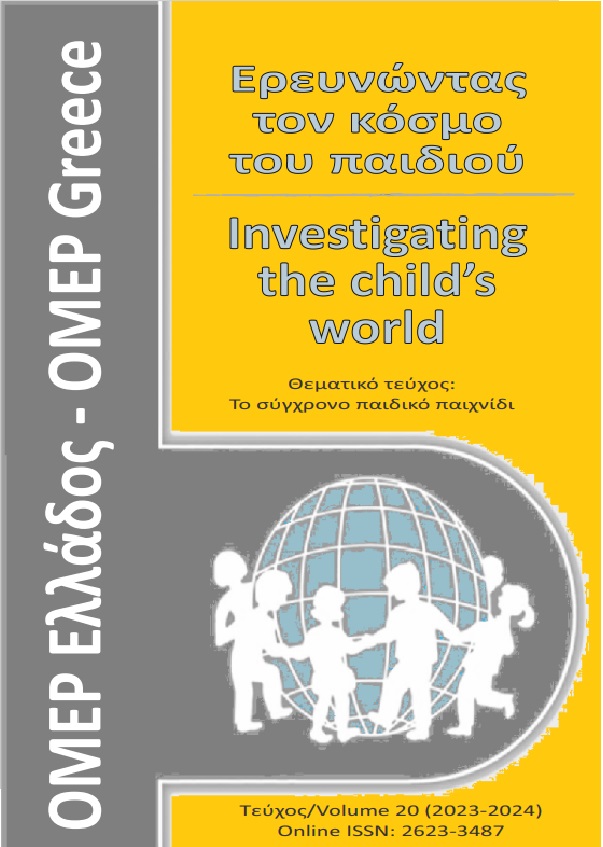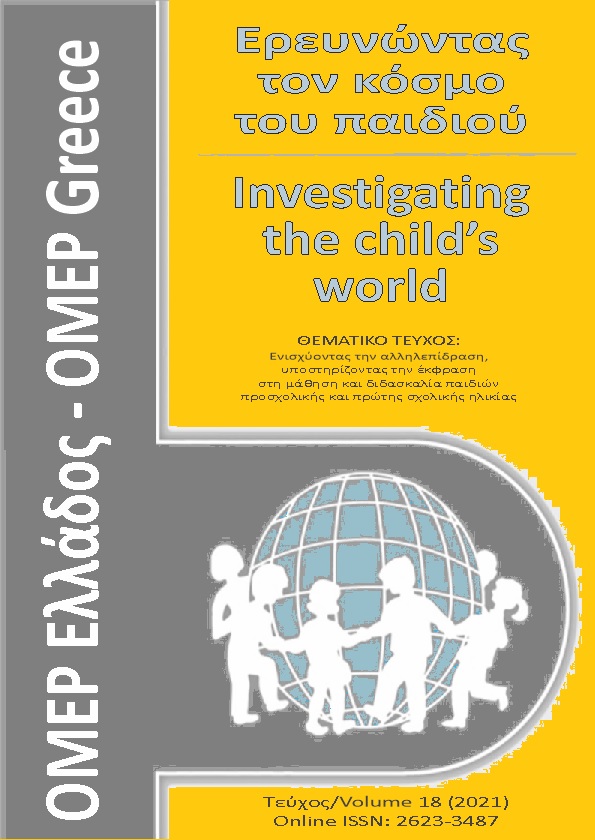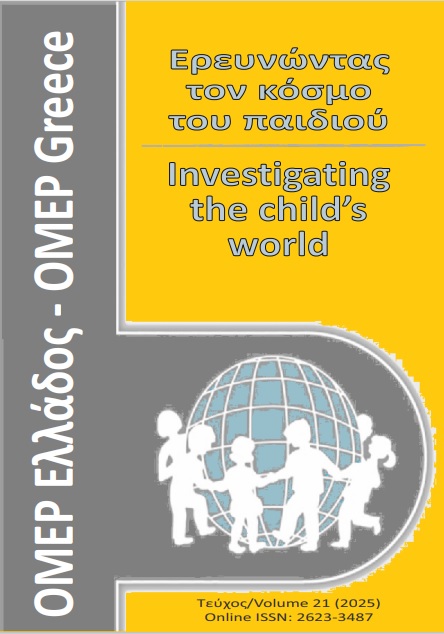Play in heterogenous classrooms for children with and without disability: Perspectives of student early childhood education teachers
Abstract
This article examines the views of student early childhood education teachers (ECETs) on play and its relation to learning in heterogeneous classrooms of kindergartens, when children with and without disability co-exist. More specifically, focusing on the example of the Undergraduate Department of Educational Sciences and Early Childhood Education of the University of Patras, we examined the views of second and third year student ECETs on issues related to: their understanding of play and its relationship with learning; the role of the ECET when children with and without disability play freely; and the challenges and skills related to their future profession in the process of promoting the active participation of all children in play. The results highlight that student ECETs approach play in multiple ways and rarely link free play to teaching and learning. They believe that the role of ECETs during free play is limited to enforcing rules, providing brief assistance, and managing crises. Furthermore, a pedagogical and inclusive perspective was found to be absent in their views of play and playful learning for children with and without disability, as well as in their views for the skills they will need for their future professional role. Finally, the implications that the results of this research have for the process of enriching the initial education of preschool teachers at the University of Patras are discussed, so as to highlight the intersection between play, learning and the pedagogy of inclusion.
Article Details
- How to Cite
-
Vellopoulou, A., Kampeza, M., Skopeliti, I., Fyssa, A., & Fotopoulou, V. (2024). Play in heterogenous classrooms for children with and without disability: Perspectives of student early childhood education teachers. Investigating the child’s World, 20, 49–66. https://doi.org/10.12681/icw.37082
- Section
- Scientific articles & educational projects

This work is licensed under a Creative Commons Attribution-NonCommercial 4.0 International License.
Authors who publish with this journal agree to the following terms:
· Authors retain copyright and grant the journal right of first publication with the work simultaneously licensed under a Creative Commons Attribution Non-Commercial License that allows others to share the work with an acknowledgement of the work's authorship and initial publication in this journal.
· Authors are able to enter into separate, additional contractual arrangements for the non-exclusive distribution of the journal's published version of the work (e.g. post it to an institutional repository or publish it in a book), with an acknowledgement of its initial publication in this journal.
· Authors are permitted and encouraged to post their work online (preferably in institutional repositories or on their website) prior to and during the submission process, as it can lead to productive exchanges, as well as earlier and greater citation of published work.





